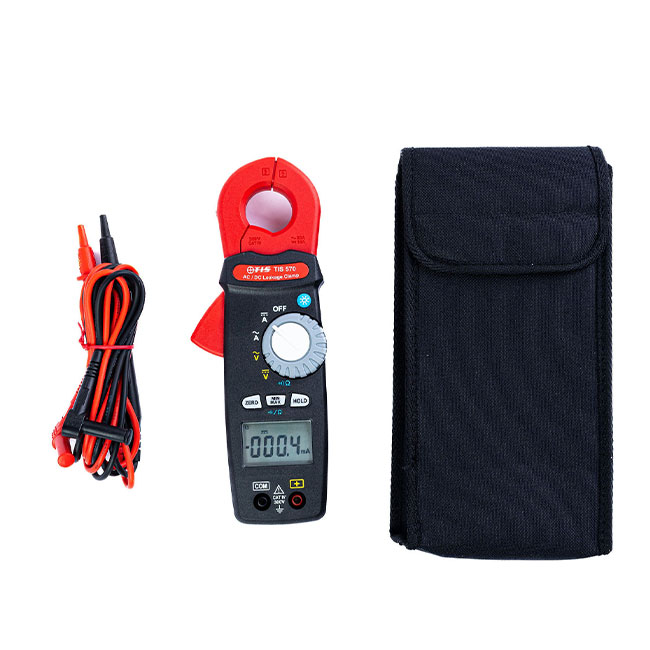Digital clamp meters are a tool used for non-contact measurement of electrical current. The integrated jaws of a clamp meter are clamped around a wire, cable or live conductor, to detect the magnetic field produced by the current flowing through the conductor. This enables the clamp meter to provide a reading of the current value. The great benefit of a clamp meter is that it enables the user to measure current without disconnecting the circuit, and hence this can be done safely, quickly and cost-effectively.
What types of clamp meter are there?
There are typically two types of clamp meter. One is known as a current transformer clamp meter, and here the jaws are iron and are covered in copper coils to help take readings. However, most digital clamp meters are known as Hall Effect clamp meters.
Hall Effect clamp meters can measure both AC and DC current, and they work by closing the jaws around the conductor to contain the concentrating magnetic field created by the current running through it.
What is DC offset?
When the jaws of the Hall Effect clamp meter concentrate the magnetic field generated by the conductor, this is focused across one or more gaps in the core after the jaws are clamped around the wire or conductor. The magnetic field must jump over this gap, and because the gap in the jaws is very small the magnetic field remains concentrated. So this is like a magnet permanently sticking to a piece of iron.
These types of clamp meter are known as ‘magnetically-sensitive’ because of the Hall Effect sensor in the jaws which detects this magnetic field. This means that the jaws can pick up DC magnetic fields to the earth and possibly other magnetic fields which might be in the vicinity when the measurement is being taken. This is known as DC offset, and effectively means ‘other’ magnetic fields not being emitted from the conductor being tested, and which the clamp meter could pick up and therefore skew the results to give an inaccurate reading.
How do we avoid DC offset?
A traditional way to avoid DC offset is to touch the conductor with the tip of the clamp meter jaws while the meter is turned off, but most modern digital clamp meters, including the range of clamp meters supplied by Test Instrument Solutions, has a zero button which automatically clears/removes/nulls the DC offset from any subsequent reading.
So pressing the Zero button and enabling this function - before taking a current measurement and when the dial is set to the DC current measurement position - avoids errors arising from Earth’s magnetic field or any other magnetic fields. Essentially, using the Zero function ensures a more accurate reading of the DC current, because the DC offset has been removed. In some respects, the zero function is a way of self-calibrating the clamp meter before taking each DC current measurement.
DC current readings are often taken in environments of high electromagnetic fields, and these can interfere with the readings, so using the zero function on a digital clamp meter is an important step in ensuring accurate readings and, therefore, making essential safety recommendations as a result.
Video Demonstration
Below you can find a product demonstration video on one of our popular clamp meters (TIS 570):
Please note that this section is for information purposes only. Anyone using equipment referred to in this section must be suitably qualified and/or experienced within the respective field. If in doubt before use, please consult a qualified electrician or engineer & thoroughly read all instruction booklets.